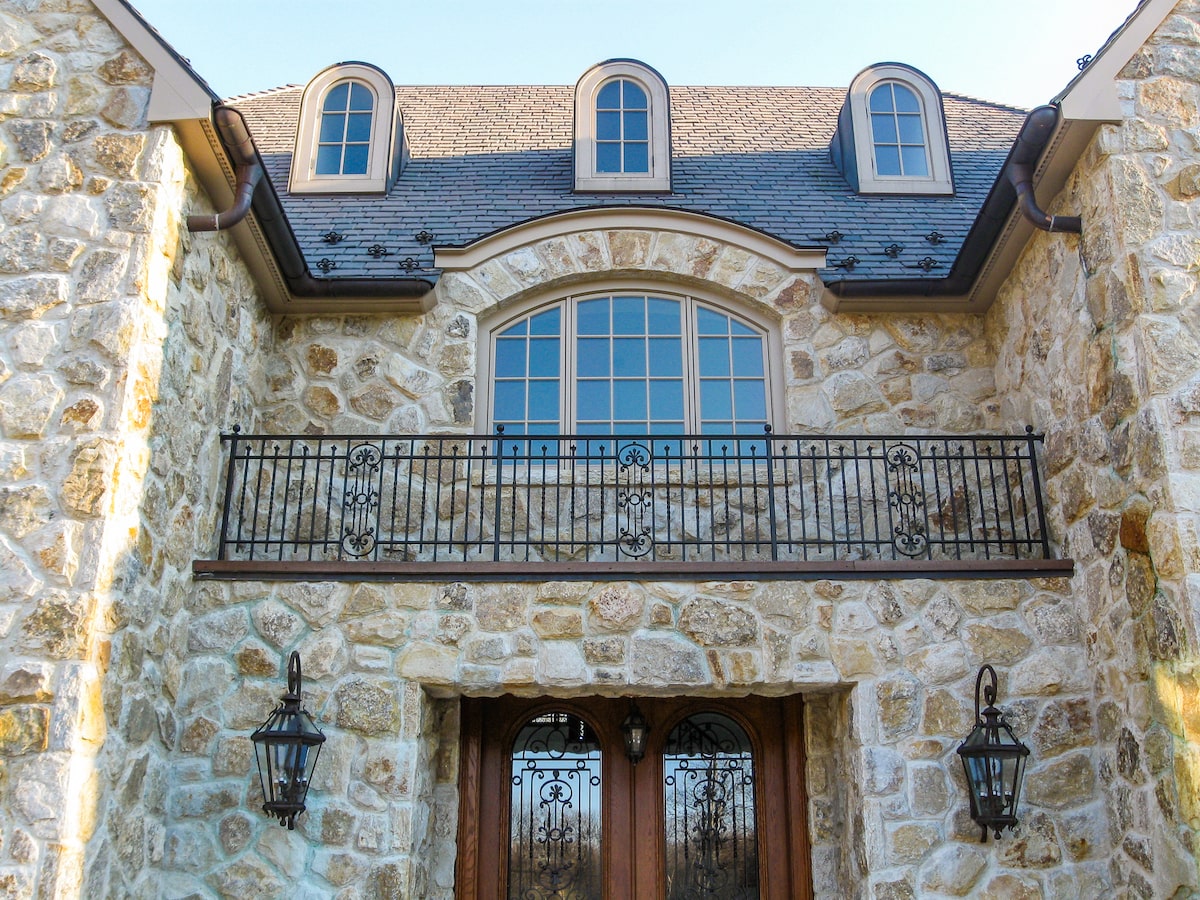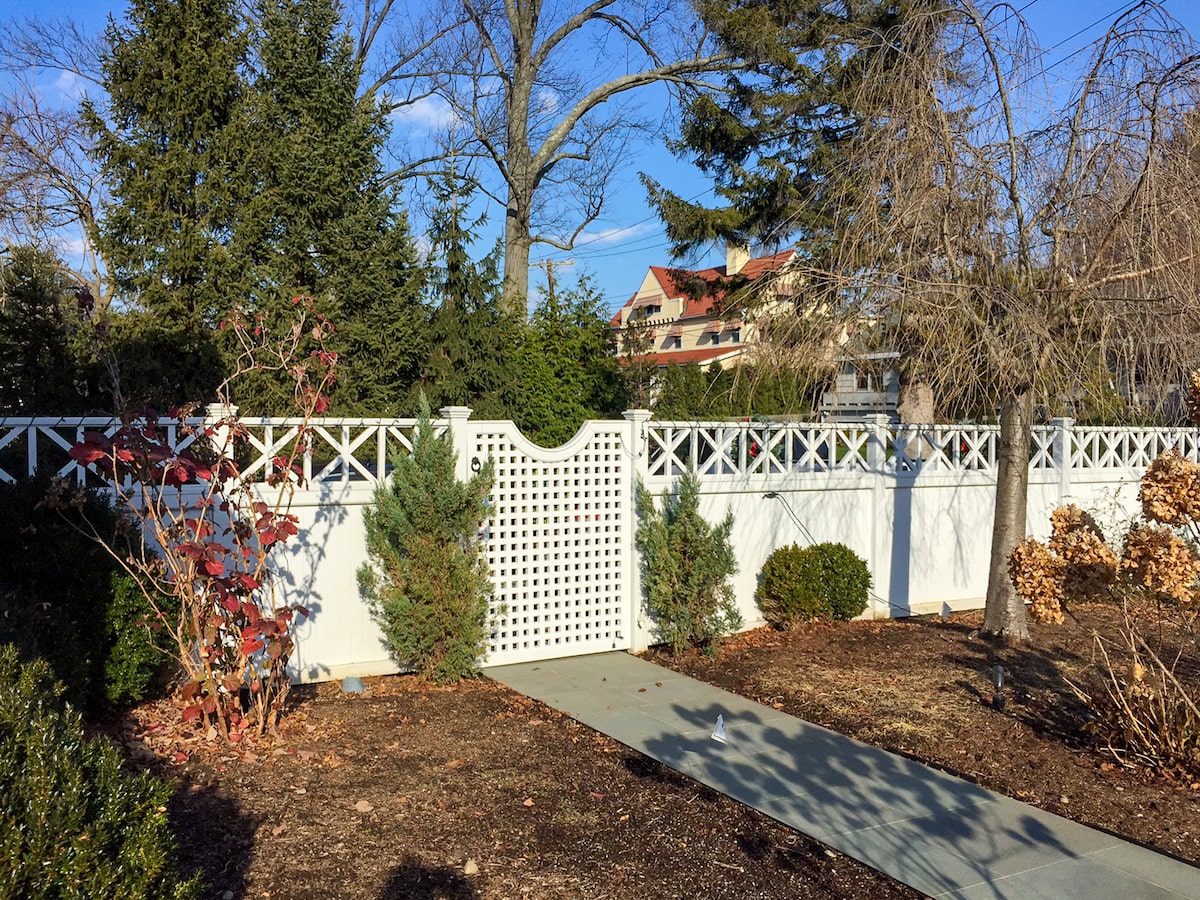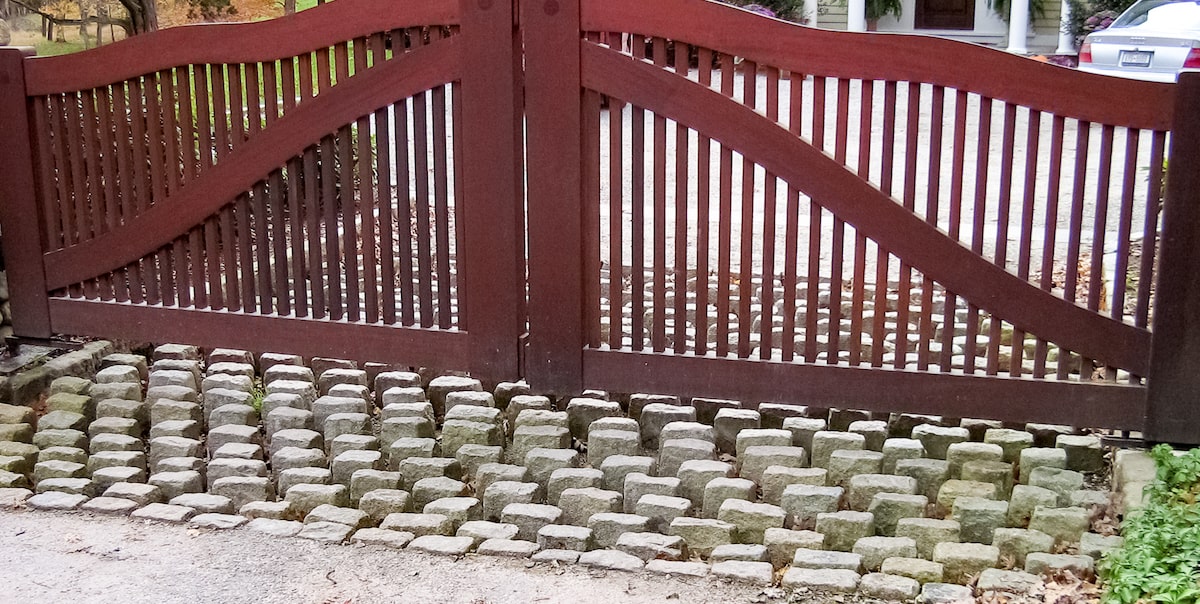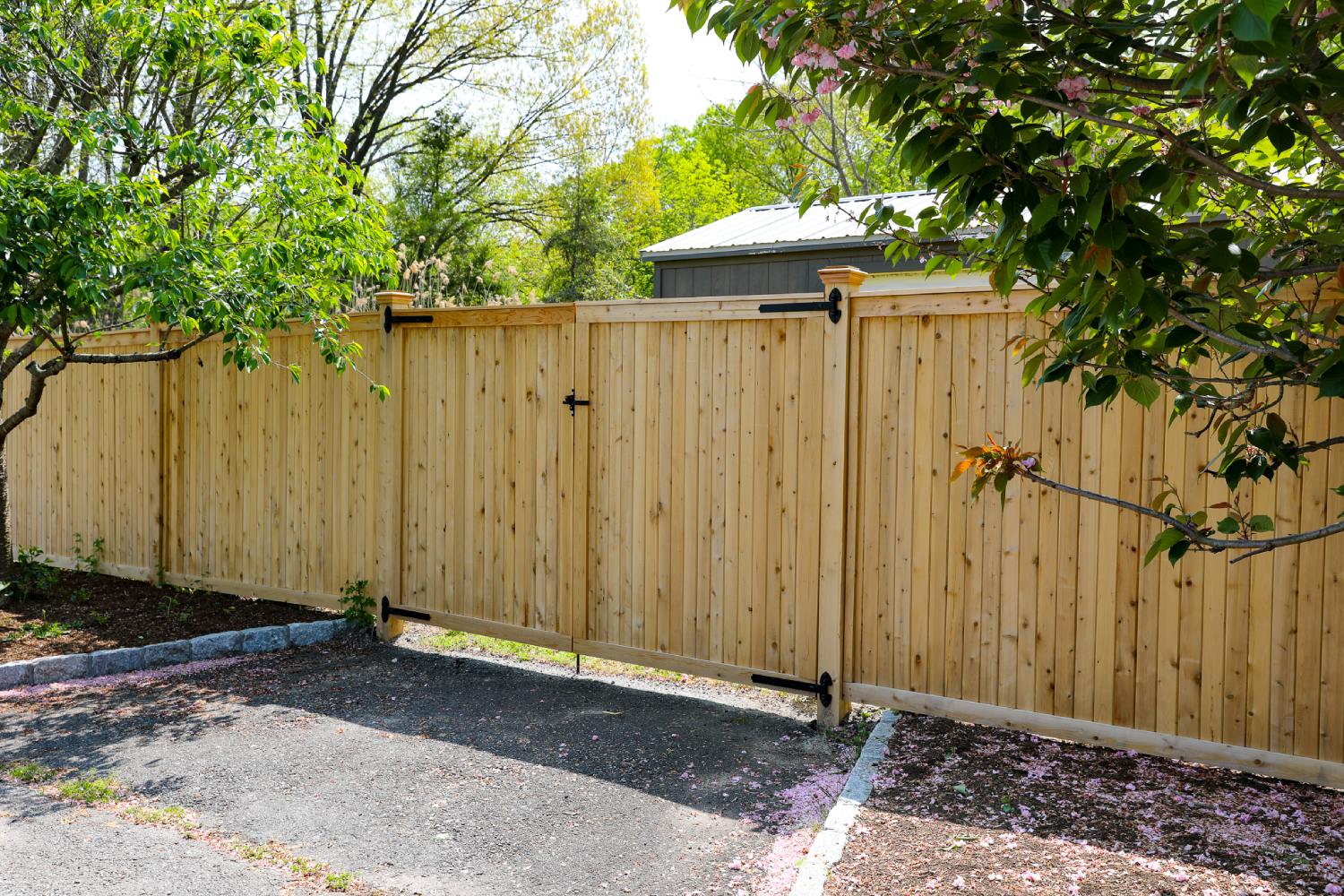Balconies add a surprising range of benefits to a home. From increasing usable living space, to creating a connection to the outdoors, to providing a unique space for entertaining and relaxing, it’s clear that balconies add value to any home.
Expert balcony design is all about creating a functional and stylish outdoor space that complements your home’s overall aesthetic and allows you to enjoy the space. Read on to learn about different types of balconies and to gain some fresh design inspiration from a beautiful range of stylish balconies.
What are the different types of balcony designs?
- True Balcony. This is the most common type of balcony, featuring a platform extending from a building’s facade, usually enclosed by a railing. True balconies offer ample space for outdoor activities, lounging, dining, and taking in the view.
- Juliet Balcony. Also known as a faux balcony, a Juliet balcony doesn’t have a platform but features a railing or balustrade in front of a large window or door, creating the illusion of a balcony. Juliet balconies are often found on upper floors of residential buildings, especially apartments, condos, and historic buildings in urban areas.
- False Balcony. Similar to a Juliet balcony, it has a railing but no platform, typically used for aesthetic purposes rather than functional space.
- Loggia Balcony. This is an enclosed balcony with a roof and walls, often integrated into the building’s architecture and serving as an extension of the interior living space. Loggia balconies are often found in warmer climates, luxury residences, and in Mediterranean-style architectural buildings.
- Mezzanine Balcony. Located indoors, this balcony overlooks a lower level of the building, usually found in large spaces like atriums or theaters. Some larger or historic homes may also feature a mezzanine balcony.
- Cantilevered Balcony. A cantilevered balcony appears to float in mid-air, supported by a projecting beam or bracket from the building’s wall, creating a modern and minimalist aesthetic. Cantilever balconies are a popular choice in urban high-rise buildings and small footprint homes featuring a modern aesthetic.
- Suspended Balcony. Hung from the building’s facade using cables or rods, this type of balcony offers a unique and eye-catching design. Suspended balconies are less common than other styles because of their complex engineering requirements. You might see a suspended balcony as a statement feature in a high-end residential building or a commercial building.
10 Balcony Design Ideas for Inspiration
1. In Black and White
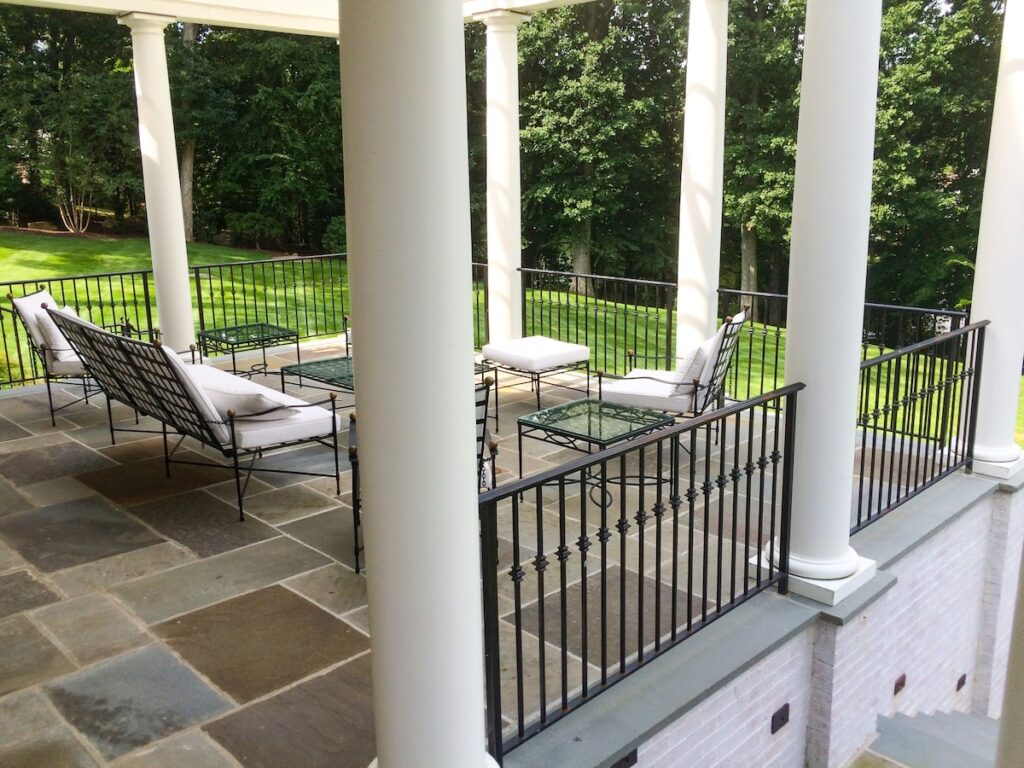
By alternating between tall white columns and black wrought iron railing, this balcony creates a comfortable yet elegant space for outdoor relaxation. The use of a flat-top wrought iron railing featuring a simple ornamentation on each baluster creates an open and airy feel for this true balcony.
By furnishing the space with classic outdoor furniture that plays off the white and black color scheme of the pillars and railing, this balcony allows the beautiful green lawn and the surrounding tree line to remain focal points.
2. Juliet, Juliet…
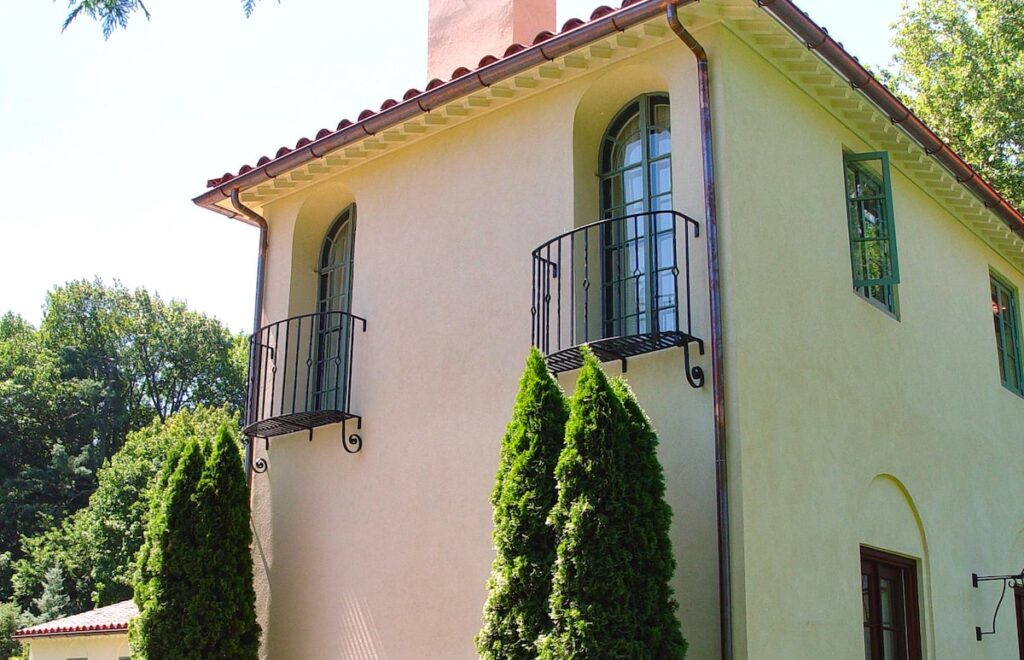
The metal juliet balconies draw the eye upward to the arched windows on the second story of this Spanish villa style home. The delicately curled details at the base of the outer metal posts add just enough whimsy, while also subtly referencing the arched shape of the windows themselves. Juliet balconies like these are a beautiful way to add texture and interest to the facade of a home.
3. A Modern Touch
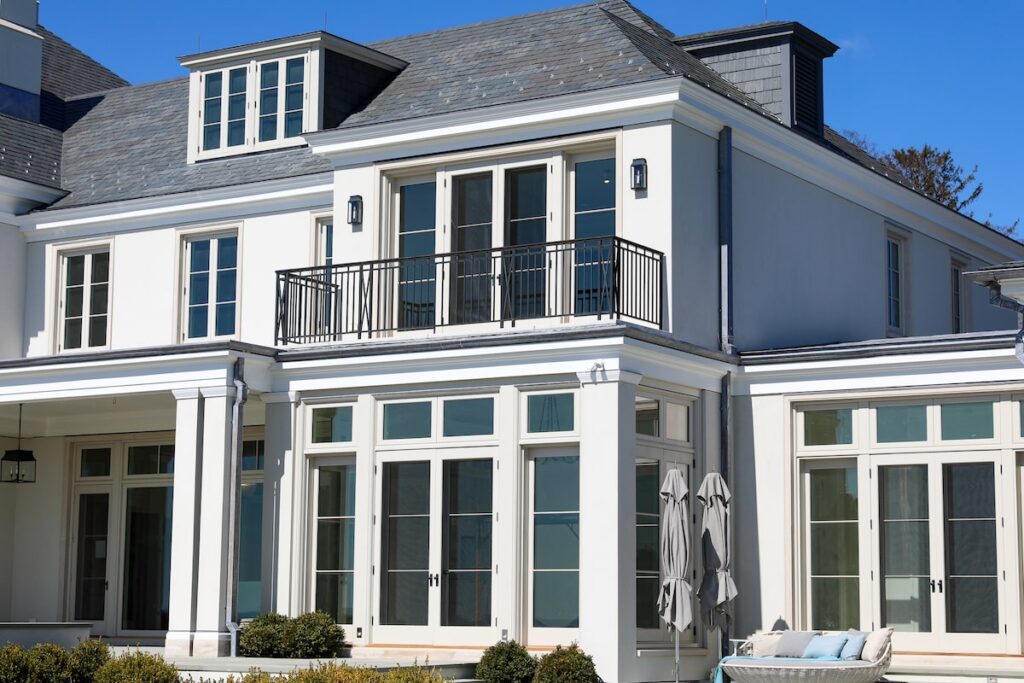
This second-story walk-out balcony adds a touch of modernity to this classic suburban home. The custom bronze railing sharply contrasts the white facade of the home; it features a contemporary flat-top design with small details that add visual interest, such as the varying spindle lengths and the intermittent “x”-crossed balusters.
4. Take in the View
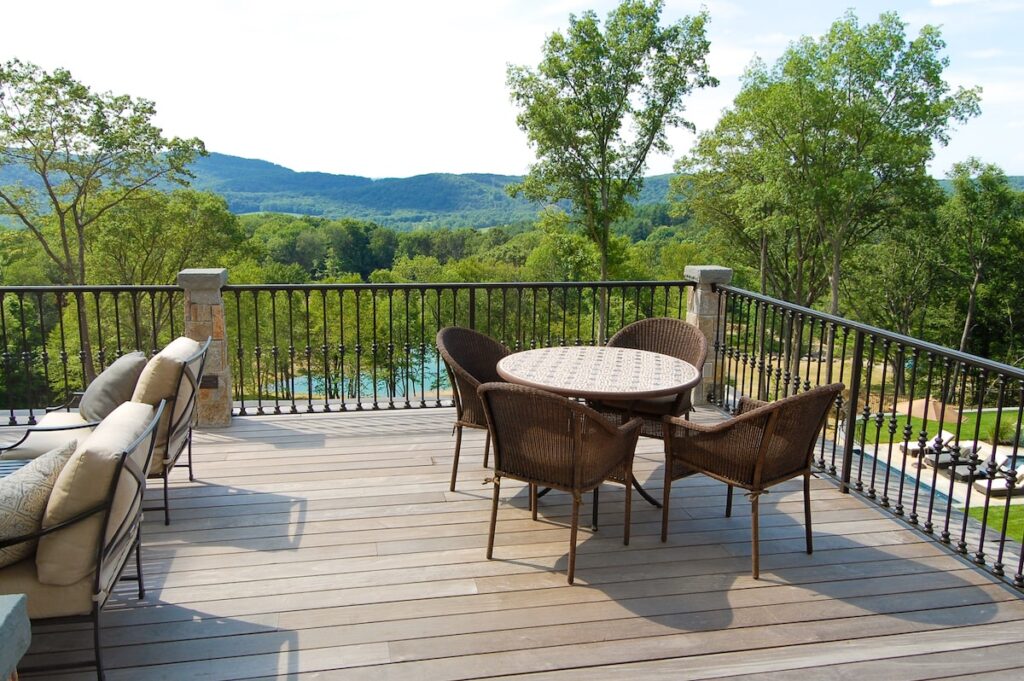
When beautiful scenery abounds, a balcony is meant for enjoying the view. On this comfortably furnished balcony, the interplay between small stonework columns and the arched design of the dark metal railing brings a contrast in colors and textures without distracting from the stunning view of the rolling green hills. Each baluster of the metal railing features ornamental ball designs at the top, base, and center.
5. Seeing Silver
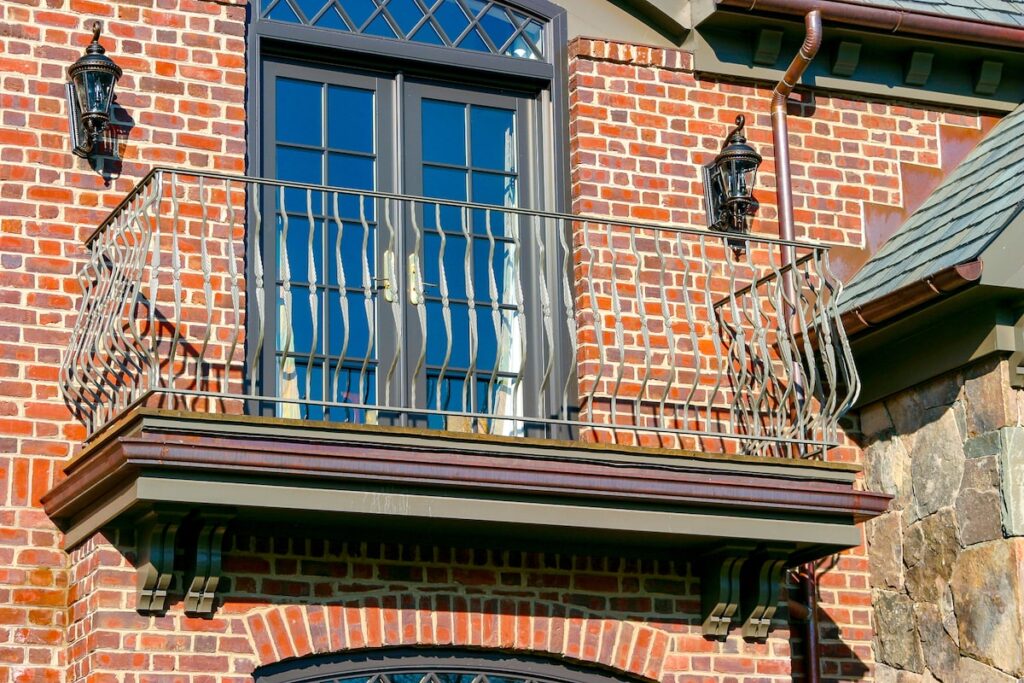
This light-colored metal balcony adds a unique design element to this classic red brick home. The silvery look of the metal draws the eye from the balcony to the lighter colored stone facade as well as the sage slate roof of the home. The curved design of the railing captures attention and adds a touch of ornamental elegance to the parallel lines of the red brick exterior.
6. At Sea
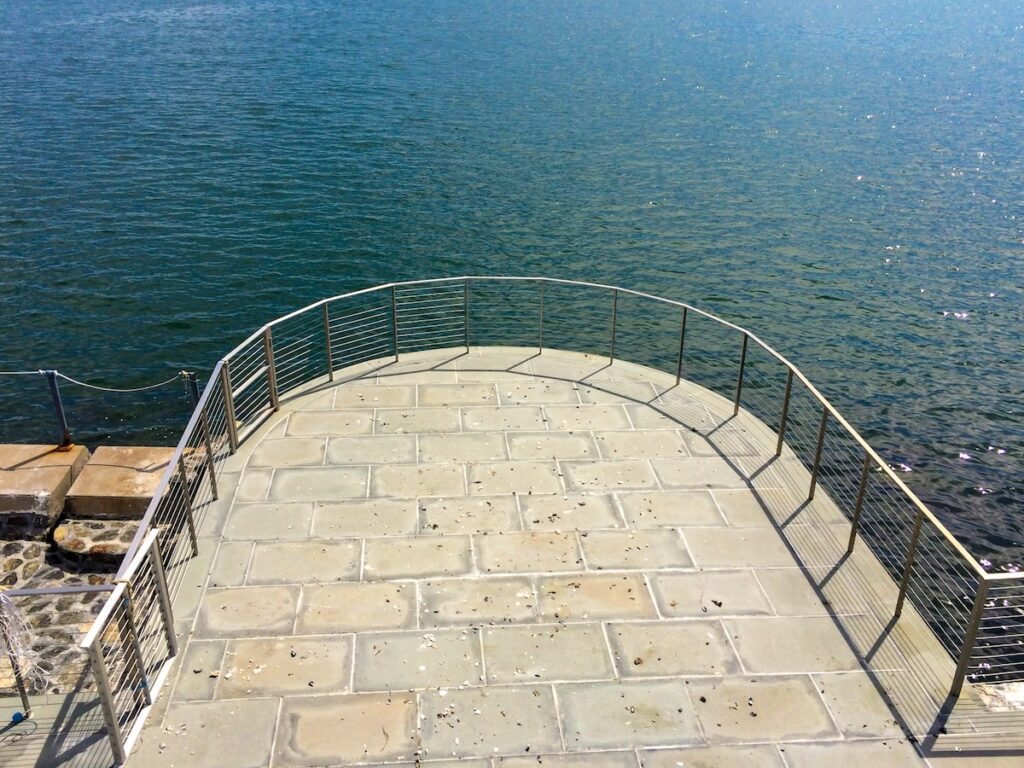
Water-lovers, unite! This balcony is meant for taking in expansive views of the Long Island Sound. The curved cable railing allows for safe enjoyment of the space, while the minimalist design ensures distraction-free engagement with this stunning view. The stainless steel posts and unobtrusive horizontal cables create a modern feel for this seaside escape.
7. Wrought Iron Sophisticate
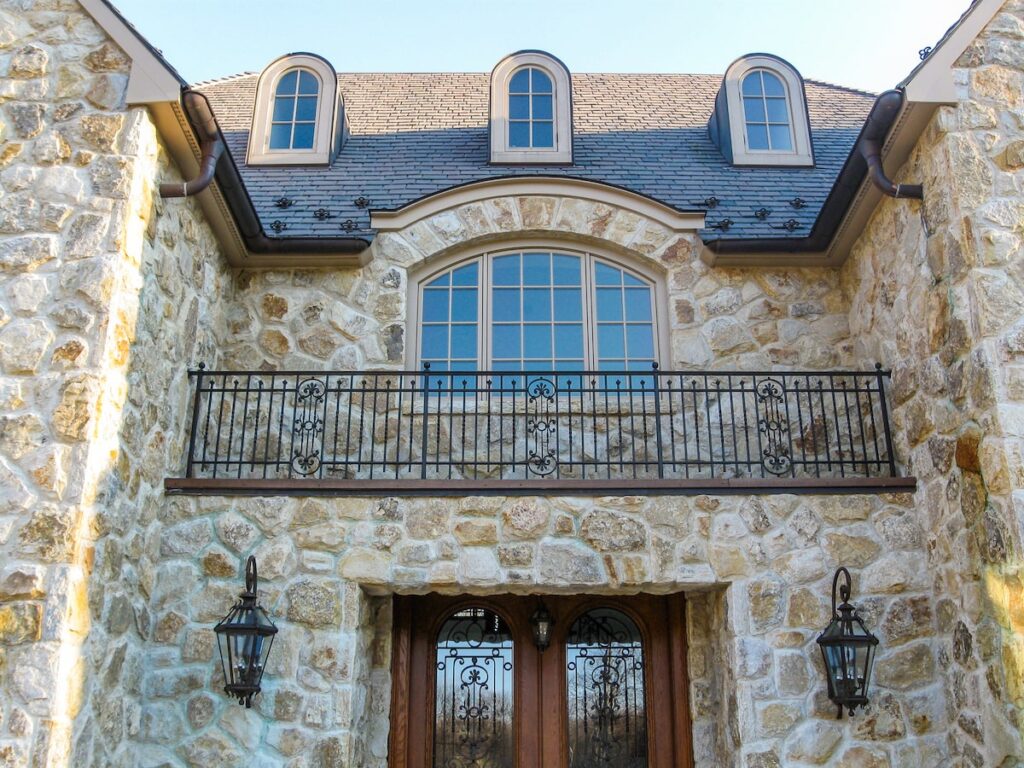
This false balcony adds ornate details and aesthetic interest to the entrance of this stonework home. The traditional design of the wrought iron railing features ball-top posts and ornamental flourishes that lend elegance to and already grand entrance. The traditional elements of the wrought iron railing are echoed in the design of the double-front doors, creating a striking and cohesive look.
8. Throwing a Curve
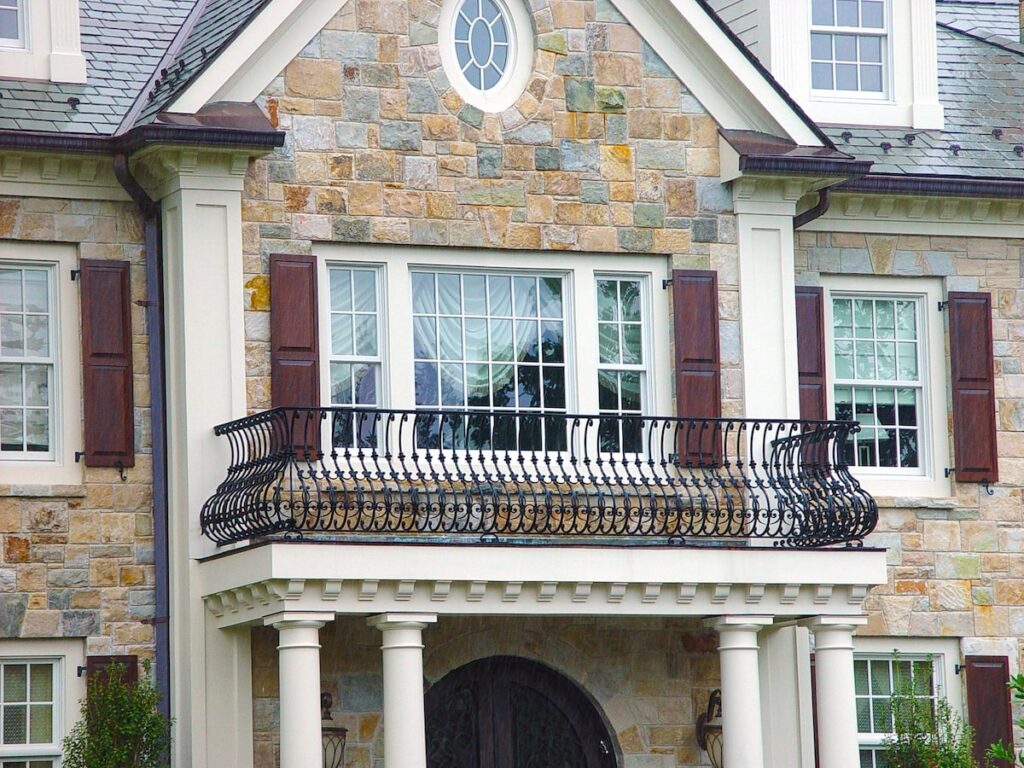
The curved design of this wrought iron balcony brings both elegance and a bit of whimsy to this traditional home. The intricate details in the railing’s balusters demonstrate the beauty of embellished wrought iron.
9. X Marks the Spot
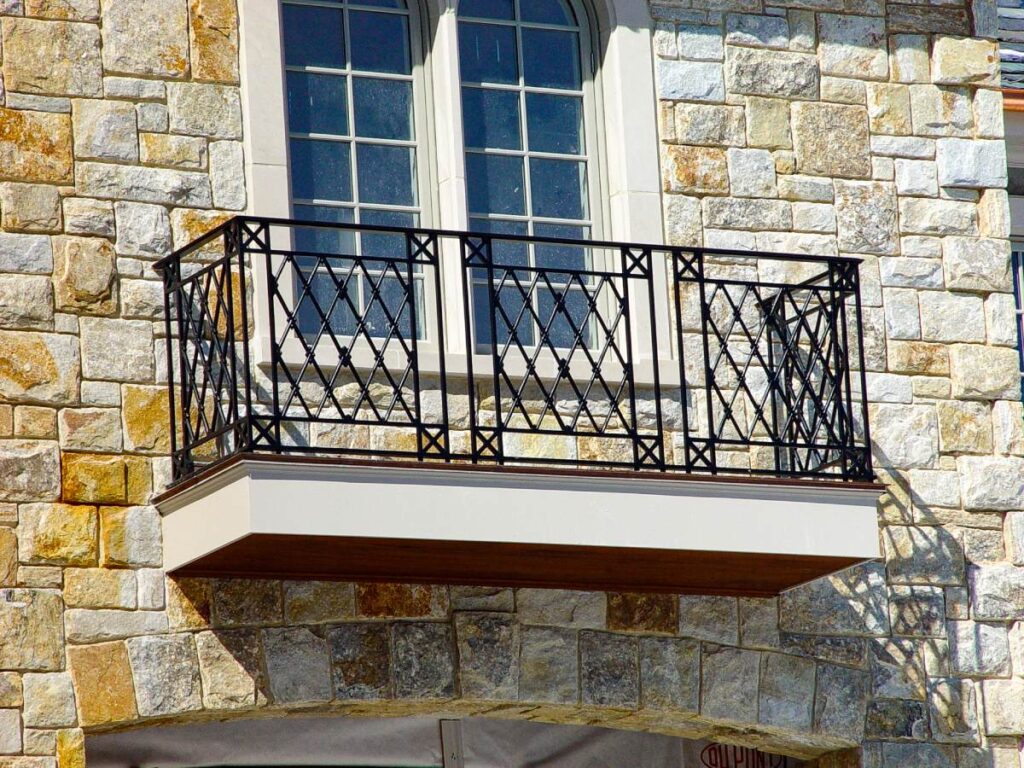
Though small, this black wrought iron balcony contrasts strikingly with the rustic stonework facade of this home, giving the balcony an outsized impact on the aesthetic. The “x” design on each of the railing’s posts, as well as the decorative geometric railing panels, gives a contemporary feel to classic wrought iron.
10. Mixed Materials
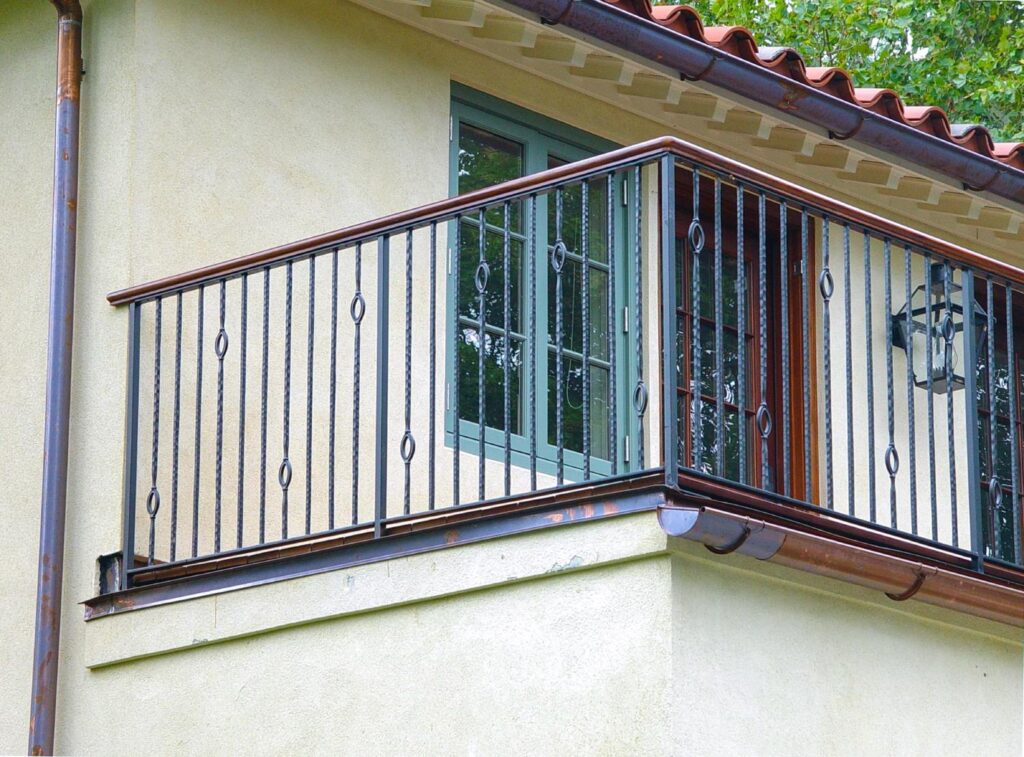
Wrought iron railings are always a classic choice, but mixing materials can offer a contemporary take. For this home, the combination of wrought iron and wood creates a unique look. The simple yet unexpected eyelet designs on the wrought iron balusters is a fresh take on this timeless material, and the cherry wood of the top rail creates visual balance with the terracotta roof and copper elements on the home’s facade.
FAQs about Balcony Design
Here are answers to some commonly asked questions about balconies.
Which type of balcony is best?
The best type of balcony depends on your intended use for the space, as well as the architectural style and size of your home. Before determining which style of balcony you want, consider factors like your climate, your desired use for the balcony, and which kind of balcony fits your home’s aesthetic. In addition, find out if there are any restrictions on balcony size or construction materials in your area.
What is a reasonable size for a balcony?
A standard balcony size is generally around 5-10 feet deep and 4-6 feet wide. This size is typical for apartments and condos, and offers enough space for a bistro set, a container garden, or a small hammock. If you’re hoping for a more creative use of your balcony, consider a large balcony (over 10 feet deep and 6+ feet wide). With this size balcony, you can enjoy comfortable outdoor furnishings, a full dining set, and more. Ultimately the size of your ideal balcony will depend on the style of your home, how you plan to use the outdoor space, plus any local building codes or restrictions.
How can I make my small balcony look bigger?
Utilize vertical space:
- Wall gardens: Instead of taking up floor space with plants, use hanging planters or vertical garden pockets. This creates a lush, green atmosphere and draws the eye upwards, making the space feel taller.
- Folding furniture: Opt for furniture that folds up or collapses when not in use. Wall-mounted folding tables are a great space-saving option.
- Storage solutions: Use wall-mounted storage hooks or cabinets to keep your balcony clutter-free.
Accentuate the feeling of spaciousness:
- Light and bright: Paint your balcony walls and railings in light, reflective colors like white, pale blue, or cream. This reflects light and makes the space feel airier.
- Transparent railings: With a nearly-invisible clear glass railing, you’ll give the illusion that your balcony extends beyond its actual footprint. Glass railings also allow you to enjoy more of the view.
- Stripes: Vertical stripes painted on the back wall can create the illusion of added height.
What kind of furniture is best for a balcony?
While your specific choices will depend on the size of your balcony and how you want to use the space, there are some general guidelines that are helpful for all balcony furniture.
Choose weatherproof materials like teak, acacia wood, aluminum, or wicker. If you opt for metal furniture, make sure you apply rust-resistant sprays, especially if you live in a humid climate.
Buy cushions made with outdoor fabric that’s water and fade resistant. Even outdoor cushions and soft furnishings weather eventually, so consider storing your cushions inside during the winter season or other times where you use your balcony less frequently.
Keep your balcony feeling spacious and comfortable by avoiding too much furniture – opt for fewer pieces and/or less bulky options if you’re working with a smaller balcony.
What kind of plants are best for a balcony?
Balconies are often a wonderful place to create a container garden with pots or planter boxes. You could opt for growing herbs, container-friendly vegetables like tomatoes and peppers, or you might prefer ornamental plants and flowers.
Consider your climate and how much sun your plants will receive when choosing the specific specimens, and keep in mind, container-bound plants require more frequent watering.
For small balconies, a vertical garden is an excellent way to utilize your space.
How can I add privacy to my balcony?
If you’re interested in privacy as well as a balcony garden, you might consider training fast-growing climbing vines like morning glory on a trellis or lattice for a natural privacy screen.
If your balcony adjoins your lawn or garden, you could plant a row of evergreens or large shrubs to create privacy. Other options include adding a privacy screen, or replacing a low railing with privacy fencing.
How much weight can a balcony support?
Balconies are required to adhere to specific weight capacities depending on local building codes: check out your municipality’s codes for details.
In general, though, balconies on taller buildings (four stories or higher) are designed to hold a higher weight capacity than those on shorter buildings. Taller buildings might have a capacity of 100 pounds per square foot, while shorter ones might be rated for 40 pounds per square foot.
Design a new balcony for your home with Garon Fence and Bedford Ironworks
At Garon Fence, our specialists understand how a beautifully designed balcony can boost your enjoyment of your home. Let our team help you create a balcony that reflects your unique taste and complements your home’s architecture. Contact us today or call 914-666-5596 to start planning your project.

